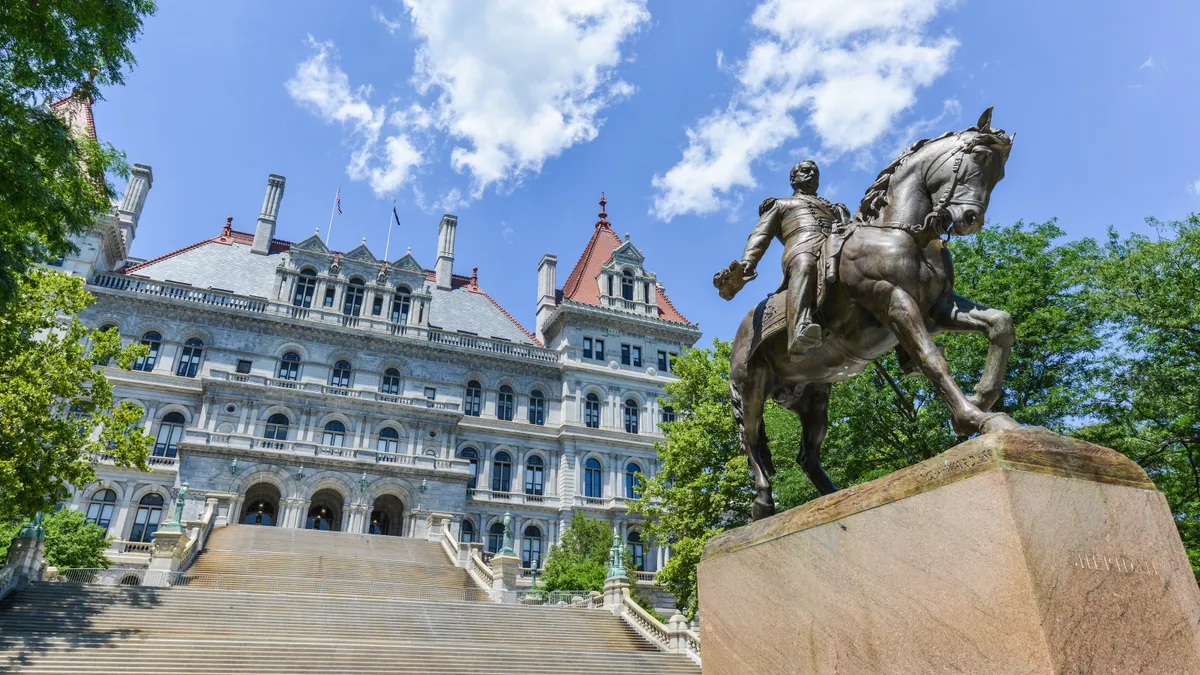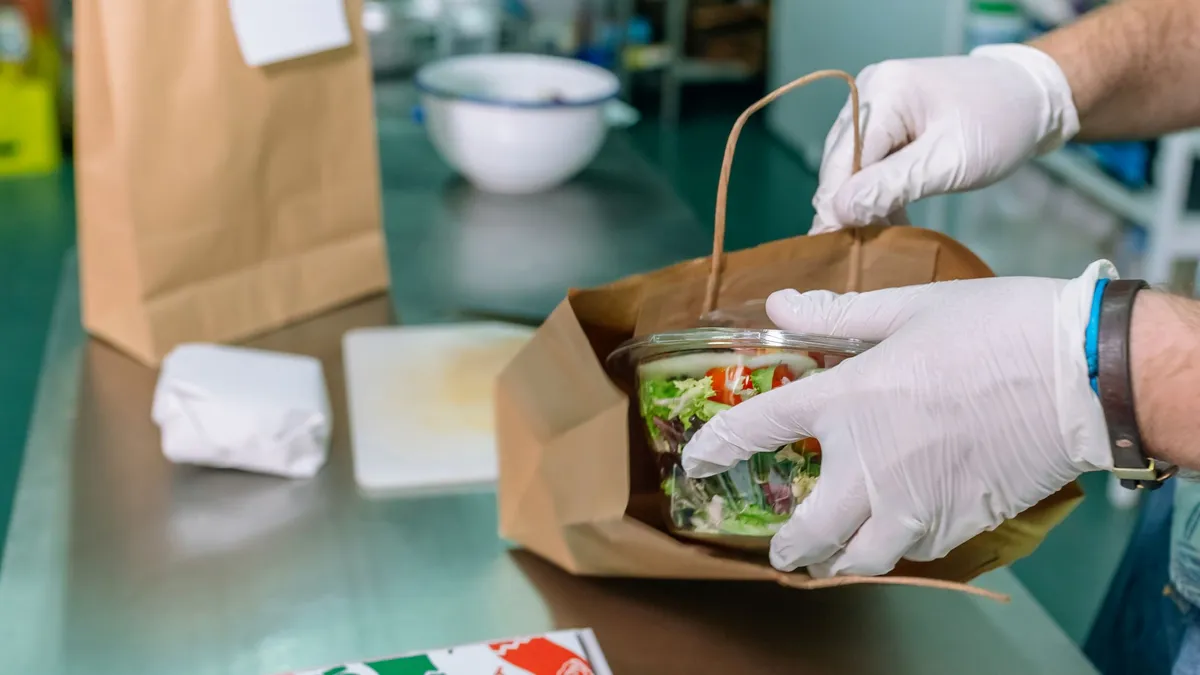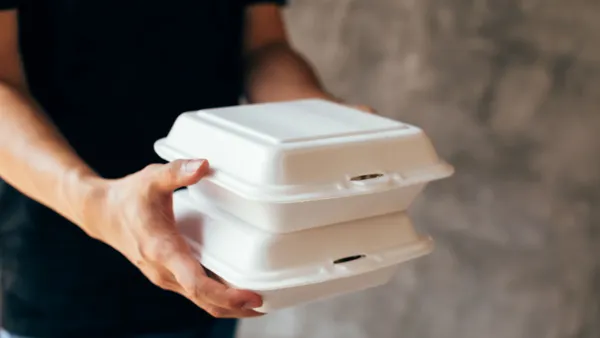Dive Brief:
- With days remaining in New York’s legislative session, an extended producer responsibility bill that is unpopular with packaging-related trade groups has again moved forward.
- The Packaging Reduction and Recycling Infrastructure Act, a bill sponsored by Democratic state Sen. Pete Harckham, passed the Senate last week. It was delivered to the Assembly and referred to the Ways and Means Committee.
- Groups including Ameripen, the Can Manufacturers Institute, the Flexible Packaging Association, the Biodegradable Products Institute, the Plastics Industry Association, the Carton Council and more have previously voiced support for an alternate EPR bill, known as the Affordable Waste Reduction Act and sponsored by Democratic state Sen. Monica Martinez, which has not moved.
Dive Insight:
The Packaging Reduction and Recycling Infrastructure Act also passed the Senate last year, but ran out of time for consideration in the Assembly.
This came as a relief to packaging and brand groups, which dislike what they see as a bill trying to do a lot more than set up an EPR program. Ameripen, for example, has called it “overly prescriptive and unfeasible.” Certain waste and recycling companies have also opposed the bill.
The bill would also restrict the state from counting chemical recycling technologies as recycling and calls for phasing out PFAS and certain other chemicals from packaging.
This year, the session’s end date in the Assembly has been extended from June 12 to June 17, Spectrum News 1 reported.
Business groups are using that time to advocate instead for Martinez’s bill, as they have been for months. Reporting by publications such as New York Focus and the Mott Haven Herald show significant lobbying expenditures by groups such as the American Chemistry Council on this issue.
In a letter promulgated by the Business Council of New York State and signed by packaging groups this year, the organization said the Martinez bill was modeled on “recently adopted Minnesota legislation, and informed by programs adopted in other states” to create “a more workable approach to increasing the recovery and reuse of post-consumer packaging and paper products.”
“Also, at a time when ‘affordability’ is a major focus of lawmakers, we believe the EPR program to be established [under the Martinez bill] will minimize costs and inconveniences imposed on consumers,” the letter continued.
That bill has similarities to other recent “shared responsibility” models adopted in Maryland and Washington this year. It calls for producers to begin reimbursing recycling costs at a rate of 50%, scaling up to 90% two years later.
Conversely, the Harckham bill also includes rates for recycled content and covers prohibitions on certain toxic substances and materials. Harckham’s bill remains a “top priority” for the New York League of Conservation Voters and others.
The New York City Office of the Mayor has also voiced support for the bill, saying the Packaging Reduction and Recycling Infrastructure Act would “provide substantial revenue for municipalities and counties around the state to support ongoing recycling collection and waste diversion efforts.” City officials estimate items covered by the EPR bill make up about 30% of New York City’s waste stream, and adopting the EPR bill could potentially save the city about $150 million a year, according to a letter of support. New York City’s Department of Sanitation had backed previous versions of the bill.
Municipalities including Albany and Rochester also support the bill. Environmental groups like Beyond Plastics, as well as some faith-based groups, argue that Harckham’s version of the EPR bill offers better industry oversight and metrics for reducing single-use packaging. They say that’s in part because it would establish a new recycling inspector general office to oversee compliance.
The bill also sets proposed recycling or reuse rates for plastic packaging of at least 25% by 2030 and 75% by 2052. For certain non-plastic packaging, rates would be 35% by 2030 for and ramp up to 75% by 2052.
Waste Dive Senior Reporter Megan Quinn contributed reporting to this story.











